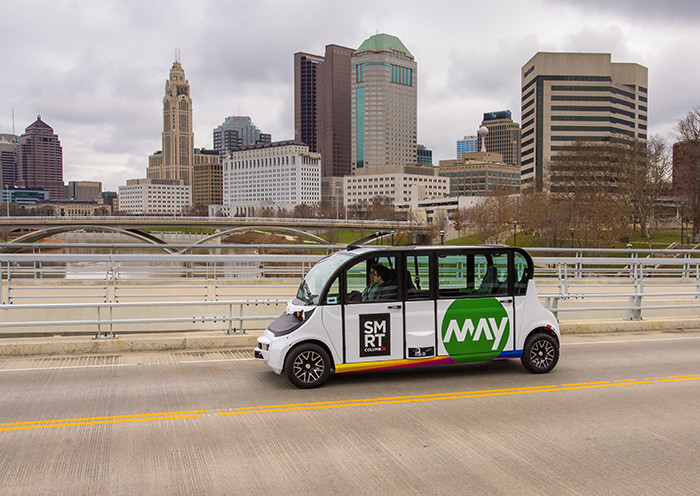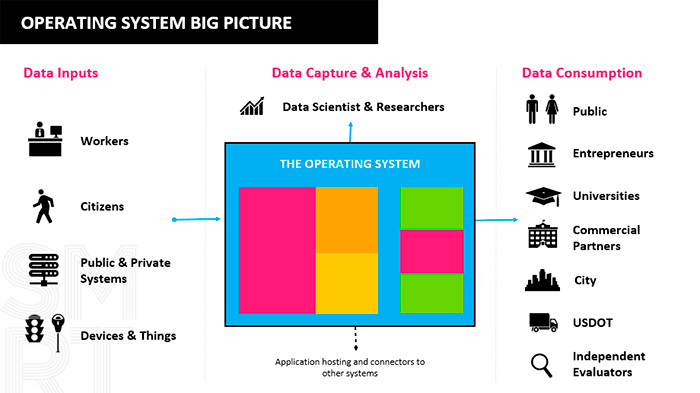Fiber-Optic Cable Sets the Foundation for the Future
Hundreds of miles of fiber-optic cable installed along Columbus’s roadway network to help the city migrate to a new traffic signal system has positioned Columbus to incorporate a number of tech enhancements, including a connected vehicle pilot project scheduled to begin in July 2020.
“Essentially, the fiber was launched to connect traffic signals,” says Mandy Bishop, Smart Columbus program manager for the city of Columbus. “That’s why we have so much to transition from independent operation of pretimed signals to an integrated traffic management system. All signals are connected to a centralized hub, the traffic management center.”
Roadside units, which are roughly 12 inches by 12 inches by 4 inches and include a Global Navigation Satellite System receiver to pinpoint locations, will be installed in 86 intersections, including more than a dozen locations considered to be intersections with high crash rates.
Onboard units are scheduled to be installed in 1,800 private, emergency and freight vehicles owned by the city. Those units contain components such as GNSS receivers to collect data on the vehicles’ position, speed and direction; a vehicle data bus, which will capture information about vehicle acceleration and angular rotation; and a moving map display.
The onboard devices, traffic signals and roadside units will communicate over a secure connected vehicle network via wireless dedicated short-range communications radio technology — relaying real-time information such as alerts about potential rear-end collisions or approaching emergency vehicles that could be given priority at stoplights.
A connected vehicle environment can offer a number of safety advantages for both the city and motorists, according to Ryan Bollo, Smart Columbus project manager for the city of Columbus.
“In this age of ever-increasing distracted driving, the ability to notify a driver of an impending incident before the driver senses it is a great opportunity to reduce the number of incidents,” Bollo says. “The efficiency of roads can also improve. By implementing new strategies enabled by this connectivity, such as optimizing signal timing, cities can work to reduce congestion, allowing drivers to experience shorter drive times.”
MORE FROM STATETECH: See how edge computing helps smart cities with data collection and processing.
Travelers Benefit from Autonomous Vehicles and Wi-Fi
Columbus is also testing autonomous transportation as part of its smart tech exploration. From December 2018 to fall 2019, a self-driving shuttle carted passengers between the city’s Center of Science and Industry, the National Veterans Memorial and Museum, Bicentennial Park and the Smart Columbus Experience Center, where visitors can learn about smart technology and test-drive electric cars. The shuttle eventually logged more than 7,500 miles.
A positioning system was used to help premap all routes; the shuttle — which Bishop describes as tall, angular and looking somewhat like “a spaceship bus” — held 10 to 12 people and utilized lidar and radar sensors to gather information, such as curb presence, which was processed via algorithms to help guide the vehicle through its course.













